How to Clean an Induction Cooktop Properly
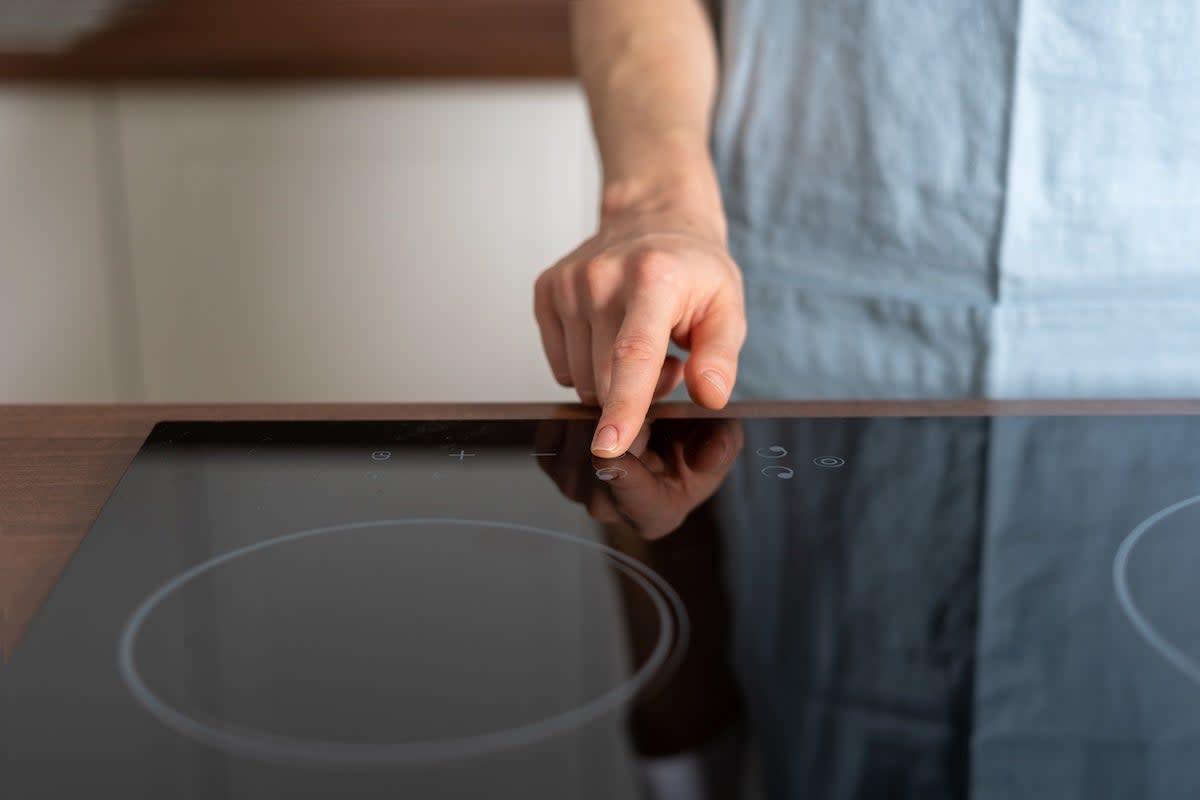
Induction cooktops have become a staple in modern kitchens because of their sleek designs and efficient cooking abilities. Unlike traditional gas or electric stoves, induction cooktops use electromagnetic fields to heat pots and pans directly, offering precise temperature control and faster cooking times.
One of the major benefits of using an induction cooktop is that they require minimal maintenance. Joelle Battista, head of culinary marketing at Designer Appliances, explains, “Induction cooktops are amongst the easiest cooktops to clean, so they don't need a lot of scrubbing or chemicals.” She does add, however, that "regular maintenance is vital to keep your induction cooktop looking brand new."
While the process may be simple, it’s still important to use the right tools and techniques to keep your induction cooktop looking its best. Let’s explore everything you need to know about cleaning an induction cooktop.
RELATED: A Sustainable Kitchen Remodel Can Actually Save You Money—Here’s How
Project Overview
Working Time: 5 to 15 minutes
Total Time: 10 to 20 minutes
Skill Level: Beginner
Estimated Cost: $5 to $15
Before You Begin
Before cleaning your induction cooktop, remember that using the wrong materials can do more harm than good.
Battista says, “Avoid abrasive cleaners or steel wool, which can leave deep scratches that ruin the appearance and can even sometimes affect the cooking performance.” Instead, she says, “Opt for non-abrasive liquid cleaners that are specifically designed for glass stovetops or ceramic surfaces.” Finally, look at the cleaning instructions found in your range’s owner’s manual in case your particular induction cooktop comes with specific cleaning instructions.
RELATED: The Best Electric Cooktops for Your Kitchen
STEP 1: Wipe the surface with a damp cloth.
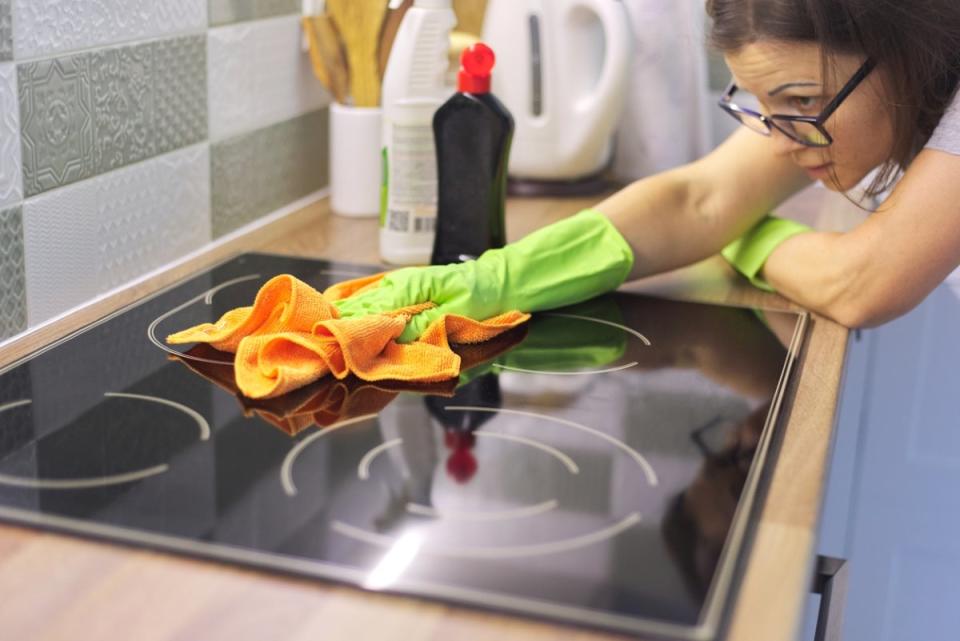
Photo: istockphoto.com
Turn off the cooktop and remove any cookware. Gently wipe the cooktop with a damp microfiber cloth. Microfiber cloths are soft and non-abrasive, making them ideal for cleaning a delicate induction cooktop without leaving scratches behind. This initial wipe-down will remove loose food particles and any superficial stains in preparation for a deeper clean.
STEP 2: Apply non-abrasive cleaner.
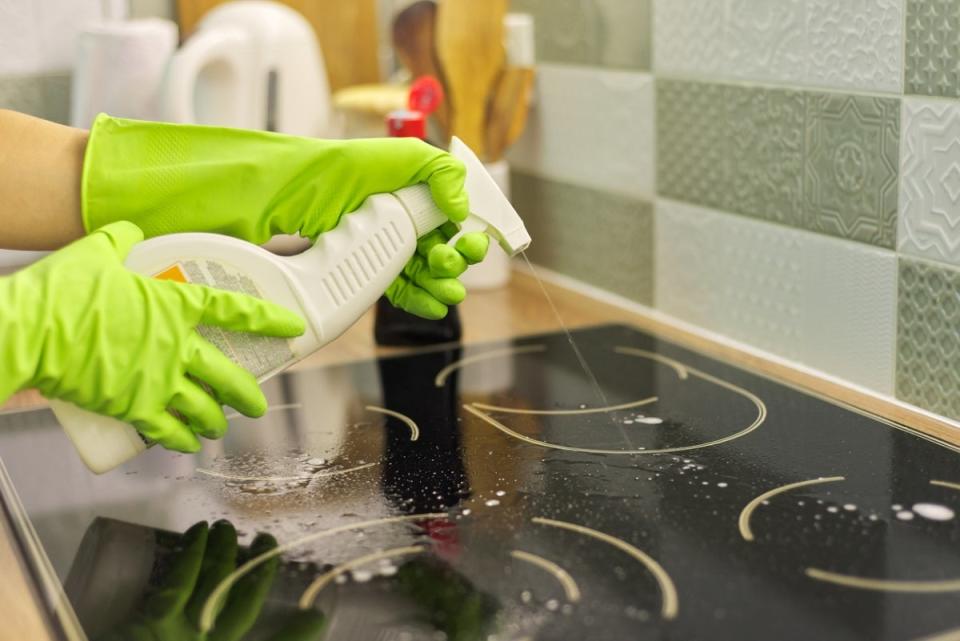
Photo: istockphoto.com
After the initial wipe-down, apply a small amount of non-abrasive liquid cleaner specifically designed for glass or ceramic cooktops. These products are designed to break down grease and grime while being gentle enough to avoid damaging the cooktop’s surface. Spread it evenly across the surface of the induction cooktop, focusing on areas with tougher stains or spills. Let the cleaner sit for 5 to 10 minutes to work its magic.
As an alternative, you can make a DIY induction stove cleaner using common pantry ingredients. Mix equal parts water and white vinegar in a spray bottle. Sprinkle the cooktop’s surface with baking soda, and then spray your vinegar solution on top. The chemical reaction that occurs between vinegar and baking soda will cause the baking soda to bubble and fizz, loosening dirt and grime. Once the fizzing slows after a couple of minutes, wipe away the mixture with a damp microfiber towel.
RELATED: How to Make a Homemade Degreaser to Conquer Kitchen Grime
STEP 3: Scrub gently with a microfiber cloth.
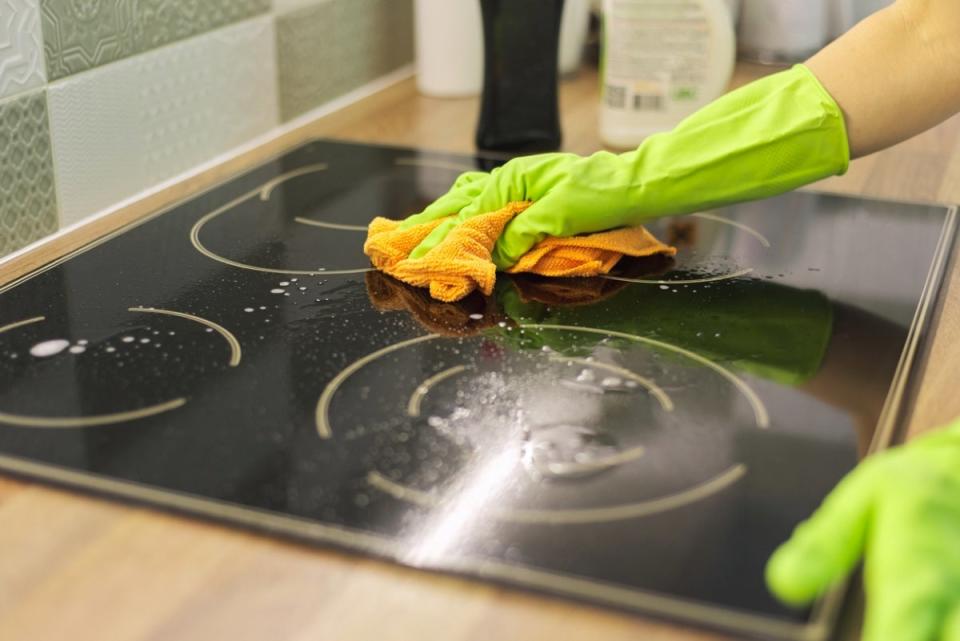
Photo: istockphoto.com
Using a clean microfiber cloth, gently scrub the cooktop in a circular motion. This evenly distributes the cleaner to effectively lift the grime from the entire cooktop.
Once the cooktop is scrubbed gently, focus on areas with stubborn stains, applying a bit of pressure as needed. It's important to scrub gently to avoid scratching the surface. If a stain remains after scrubbing, reapply the cleaner and let it sit for 15 minutes before trying again.
STEP 4: Rinse and dry the surface.
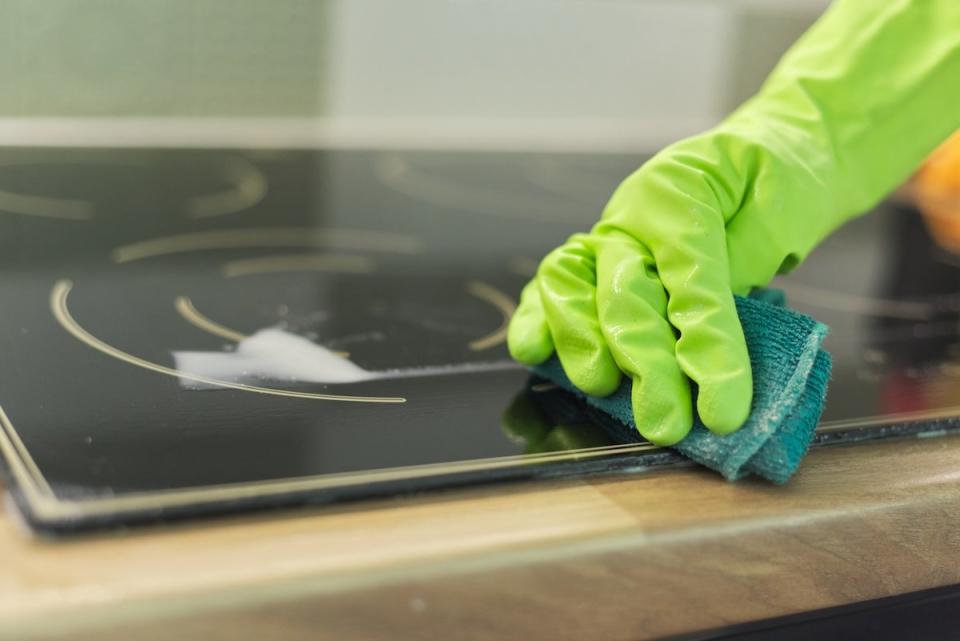
Photo: istockphoto.com
At this point, some cleaner and dirt will likely still remain on your cooktop. Use a clean cloth dampened with water to remove leftover cleaner and dirt. After rinsing it this way, use a dry microfiber cloth to thoroughly dry the cooktop’s surface. This step is crucial in preventing streaks and water marks while ensuring your induction cooktop keeps operating at peak performance.
Final Thoughts
Cleaning an induction cooktop properly is essential to maintain its sleek appearance and impressive functionality. By following these simple steps, you can ensure your cooktop stays in top-notch shape without risking damage from abrasive materials.
Regular cleaning not only enhances the cooktop's performance but also extends its lifespan, making it a valuable investment in your kitchen. Just remember to use the right tools and take a gentle approach to preserve the delicate surface of your induction cooktop.

